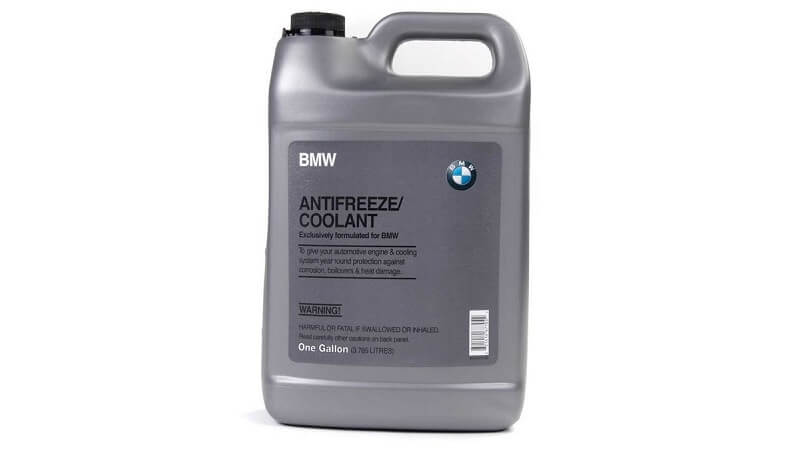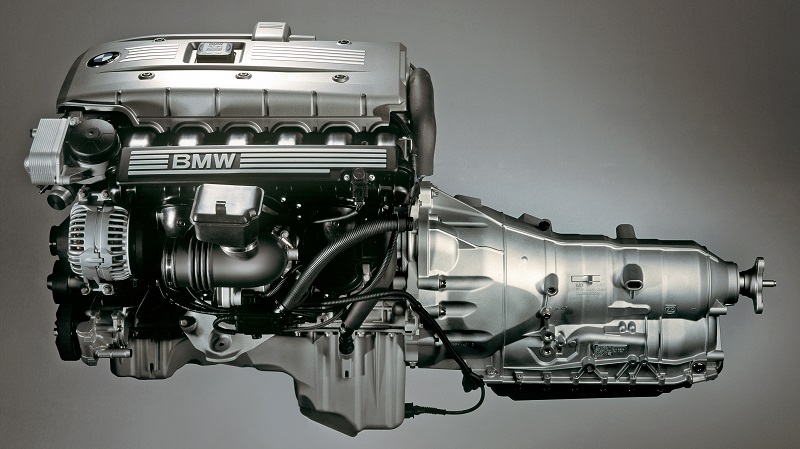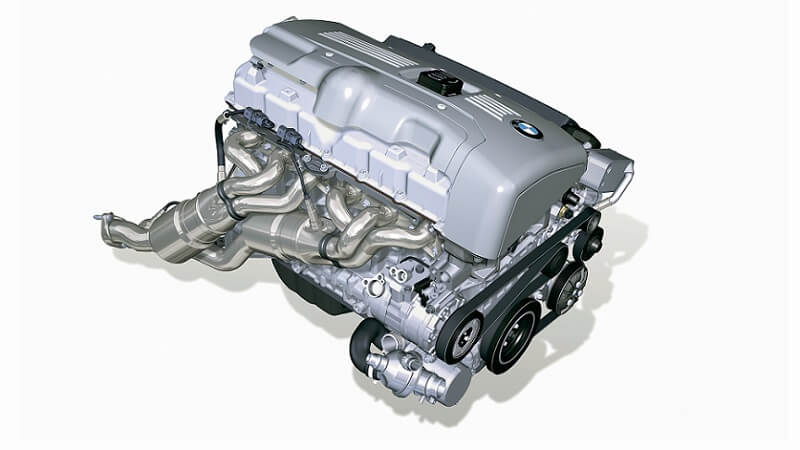The BMW N55 is a turbocharged 3.0L inline-six engine that debuted in 2009. It had big shoes to fill as it was introduced to replace the successful N54 — BMW’s first mass-produced turbocharged engine. The N55 featured multiple changes, most of them implemented to make it a more reliable unit than its predecessor. Since it was first introduced, it’s been used to power several models in the German manufacturer’s lineup. Here’s all you need to know about the BMW N55, arguably BMW’s most reliable turbocharged engine:

BMW N55 VS BMW N54 — Similarities and Differences
Just like the N54, the N55 displaced 2,979cc, with bore and stroke figures of 84mm and 89.6mm, respectively. The compression ratios were identical as well at 10.2:1. These engines also use an air-to-air intercooler and an open deck block design with an aluminum block and iron cylinder sleeves.
Single VS Twin Turbochargers
The most notable difference between the two engines is with the turbochargers. While the N54 used twin turbochargers, BMW decided to get rid of one with the N55, which uses a single twin-scroll turbo. This isn’t necessarily a downgrade.
A twin-scroll turbocharger is a single turbo whose exhaust housing is split into two “scrolls”. The 3 cylinders on the same firing order feed one scroll, while the other 3 feed the second scroll. This reduces exhaust reversion, which is when the exhaust gases enter the combustion chamber, increasing temperature and emissions.
This twin-scroll turbocharger setup essentially mimics the twin-turbo setup from the N54, delivering decreased turbo spool time, increasing power while also allowing the engine to run cooler. It’s also less expensive to design and manufacture and also more compact.
Engine Internals
Another significant difference between the N54 and N55 was the engine construction. The N54 uses a forged crankshaft and rods, while the ones on the N55 are cast iron. Simply put, the previous-gen N54 engine is the more robust unit, but the N55 should not give you any cause for concern unless you’re going to tune it to put out over 600hp at the wheel.
Valvetronic and VANOS
The N55 also included BMW’s ‘Valvetronic; variable valve lift system, in addition to the ‘VANOS’ variable valve timing system that was also available on the N54. That said, the VANOS on the N55 also offers an additional 15 degrees of adjustment on the intake and 10 degrees on the exhaust side.
Other changes between the two engines are less significant than the ones we just discussed — the N54 uses a pneumatic actuator, while the N55 features an electric unit; the fuel-injectors are different; and minor adjustments, like an additional weaving around the N55 cylinder sleeve, have been made to improve cooling.
Available Versions

The N55 has powered multiple BMW models since first introduced, many of which are still on sale today. While the engine has the same configuration on every model, it’s been tuned differently based on its application.
N55B30M0
The N55B30M0 version was the first N55 engine. Output figures are 302hp at 5,700–5,800rpm and 295lb-ft of torque at 1,200–5,000rpm. As you can see, this engine is characterized by strong torque delivery that’s available throughout the rev band.
Some of the models that use this iteration include the 2013–2016 BMW F32/F33/F36 435i, 2014–2018 BMW F15 X5 xDrive 35i, 2014–2019 BMW F16 X6 xDrive35i, and the 2014–2016 BMW F26 X4 xDrive 35i.
N55B30
The N55B30 started life in 2011 and powered the 2011–2018 BMW F06/F12/F13 640i, 2012–2013 BMW E82/E88 135is, 2012–2015 BMW F20/F21 M135i, and the 2012–2015 BMW F01 740i/Li.
This engine’s peak output figures were slightly higher than the N55B30M0 — 315hp at 4,505–6,000rpm and 332lb-ft at 1,300–4,500rpm.
N55B30O0
Produced from 2013-2016 for the 2013–2016 BMW F22/F23 M235i and the 2015–2016 BMW F20/F21 M135i LCI. While torque output is identical to the N55B30, power is bumped up to 322hp produced between 4,505rpm and 6,000rpm.
N55HP
The N55HP, too, puts out just as much torque as the N55B30 but produces even more power, with 335hp coming in from 4,505rpm all the way up to 6,000rpm. This engine was used on the 2013–2015 BMW F30 ActiveHybrid 3 and the 2011–2016 BMW F10 ActiveHybrid 5.
N55B30T0
The N55B30T0 was used on two cars: the 2016–2018 BMW F87 M2, on which it produced 365hp at 6,500rpm and 369lb-ft of torque between 1,450rpm and 4750 rpm; and 2015–2018 BMW F26 X4 M40i, on which it made 355hp between 5,255–6,000rpm and 343lb-ft from 1,350–5,250rpm.
Tuning
The fact that the N55 engine was used on so many cars, from sedans to SUVs, without any significant changes is a true testament to the tuning potential it possesses. Yes, the older N54 may be the more responsive and fun-to-drive engine once tuned, but the N55 is no disappointment either.
Even the earlier versions of the N55 engine can be tuned to produce around 400whp. If you’re looking to extract even more power from the engine, you will have to swap out the stock turbocharger for an aftermarket big-single or twin-turbo setup.
BMW N55 — Common Problems

The N55 has the weaker construction when compared to the N54, but it’s the latter that is the more reliable engine. However, it did face some common issues, and, interestingly, most of them were owing to parts that were carried over from the N54.
Valve Cover Gasket Oil Leak
One of the more common issues with the N55 engine is a leaking valve cover gasket. This rubber valve is subject to high temperatures that cause it to deteriorate over time. As a result, it may crack and result in an oil leak.
The valve cover gasket sits underneath the valve cover, a plastic body that is also subject to high temperatures. The cover will typically last for over 100,000 miles, but since it’s hard to access, you should consider having it changed whenever you’re changing the gasket.
Water Pump Failure
Unfortunately, a water pump failure is an issue that plagues all BMWs and not just the N55. There are no symptoms of an impending water pump failure unless it’s electrical. If that’s the case, you will be able to check for a drop in coolant flow,
N55 VANOS Solenoid Failure
Every time your engine is running, the VANOS solenoids are at work. Understandably, this is a part that will wear out in time. If your engine is not maintained well, the solenoids can also become coated in oil which can cause problems to the engine. This could result in a significant drop in performance or even send your car to limp mode.
The N54 may be the better engine if you’re an enthusiast looking to extract as much performance as possible out of the engine. Still, it was also somewhat unreliable and expensive to fix. The N55, on the other hand, while not as competent, is still a whole lot of engines and one that you’ll be able to have a proper good time driving.
Quality OEM Parts For Your BMW N55
If you’re looking for quality parts to keep your BMW N55 engine purring flawlessly, you’re in the right place. We carry a wide array of OEM, Genuine and aftermarket parts for this legendary motor. To find what you’re looking for, all you need to do is select your vehicle over at our online store, and search for the parts you need. Our system will present you with a list of parts that match your query!





